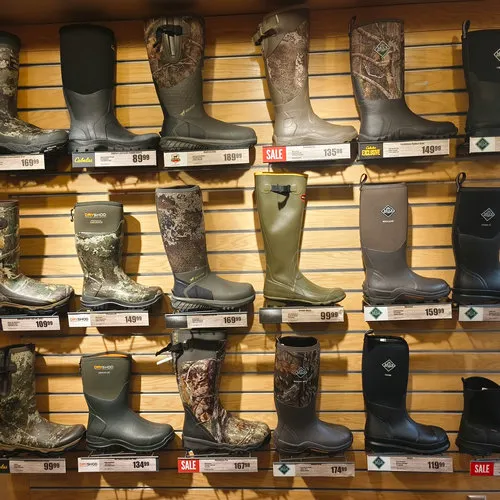Choosing Between Felt and Rubber Sole Wading Boots What You Need to Know
When it comes to wading boots, anglers and outdoor enthusiasts often find themselves faced with an important decision should they opt for felt soles or rubber soles? Both types have their pros and cons and can significantly affect your fishing experience. This article will delve into the characteristics of each type, helping you make an informed choice based on your specific needs.
Felt Sole Wading Boots
Felt-soled wading boots have been a popular choice among anglers for decades. The primary advantage of felt soles is their superior traction on slippery surfaces, particularly in freshwater environments. Felt provides an excellent grip on mossy rocks and slick riverbeds, which can be a lifesaver when navigating challenging terrain. This traction is especially crucial for wading in rivers and streams, where stability is key to avoiding slips and falls.
However, there are some downsides to felt soles. One of the main concerns is environmental. Felt materials can trap invasive species, like zebra mussels or didymo (rock snot), making it easier for them to spread between bodies of water. This has led to increasing regulations in various regions prohibiting felt soles in order to protect local ecosystems. Additionally, felt soles tend to wear out faster than rubber soles, often requiring more frequent replacement.
Rubber Sole Wading Boots
Rubber-soled wading boots have made a significant impact in the angling world as an alternative to felt. They offer a number of benefits that appeal to modern anglers. First and foremost, rubber soles are less likely to harbor invasive species, reducing your ecological footprint when moving from one water body to another. This makes rubber soles a more environmentally friendly option, and many states now encourage or require their use.
felt or rubber sole wading boots

In terms of durability, rubber soles typically outlast felt soles, making them a potentially cost-effective choice over time. They are also less susceptible to damage from sharp rocks or abrasive surfaces. Furthermore, rubber soles can provide traction on various terrains, including both wet and dry surfaces. Many models come equipped with a variety of rubber tread patterns that enhance grip, making them a suitable option for both wading and walking over land.
However, rubber soles can sometimes fall short on wet, slippery rocks compared to their felt counterparts. Although advancements in rubber sole technology have improved traction significantly, some anglers still find that felt outperforms rubber under these specific conditions.
Making the Choice
When deciding between felt and rubber sole wading boots, consider the environments in which you will be fishing. If you primarily wade in rivers with challenging conditions, felt soles may offer the traction you need. Conversely, if you plan to fish in multiple locations or want to ensure you adhere to environmental regulations, rubber soles could be the better choice.
It’s also essential to think about comfort and fit. Regardless of the sole type, ensuring your boots fit well will enhance your overall wading experience. Look for boots that provide adequate support, especially around the ankle, to prevent fatigue and injuries during long days on the water.
Ultimately, the choice between felt and rubber soles comes down to your specific fishing habits, environmental considerations, and personal preferences. Both have their strengths and weaknesses, and understanding these can help you select the wading boots that best meet your needs. Whether you opt for traditional felt or modern rubber, investing in a quality pair of wading boots is key to ensuring safety and enjoyment as you pursue your outdoor adventures.
-
Stay Dry in Any Condition with WadersNewsJul.17,2025
-
Elite Performance with Camouflage Combat BootsNewsJul.17,2025
-
Dry and Comfortable with Green Rubber Garden ShoesNewsJul.17,2025
-
Convenient Protection with Foldable RainbootsNewsJul.17,2025
-
Comfort and Protection with Neoprene Work BootsNewsJul.17,2025
-
Brighten Rainy Days with Floral Rain BootsNewsJul.17,2025
-
Safety Wellies: The Ultimate Combination of Protection, Comfort, and VisibilityNewsJun.19,2025











